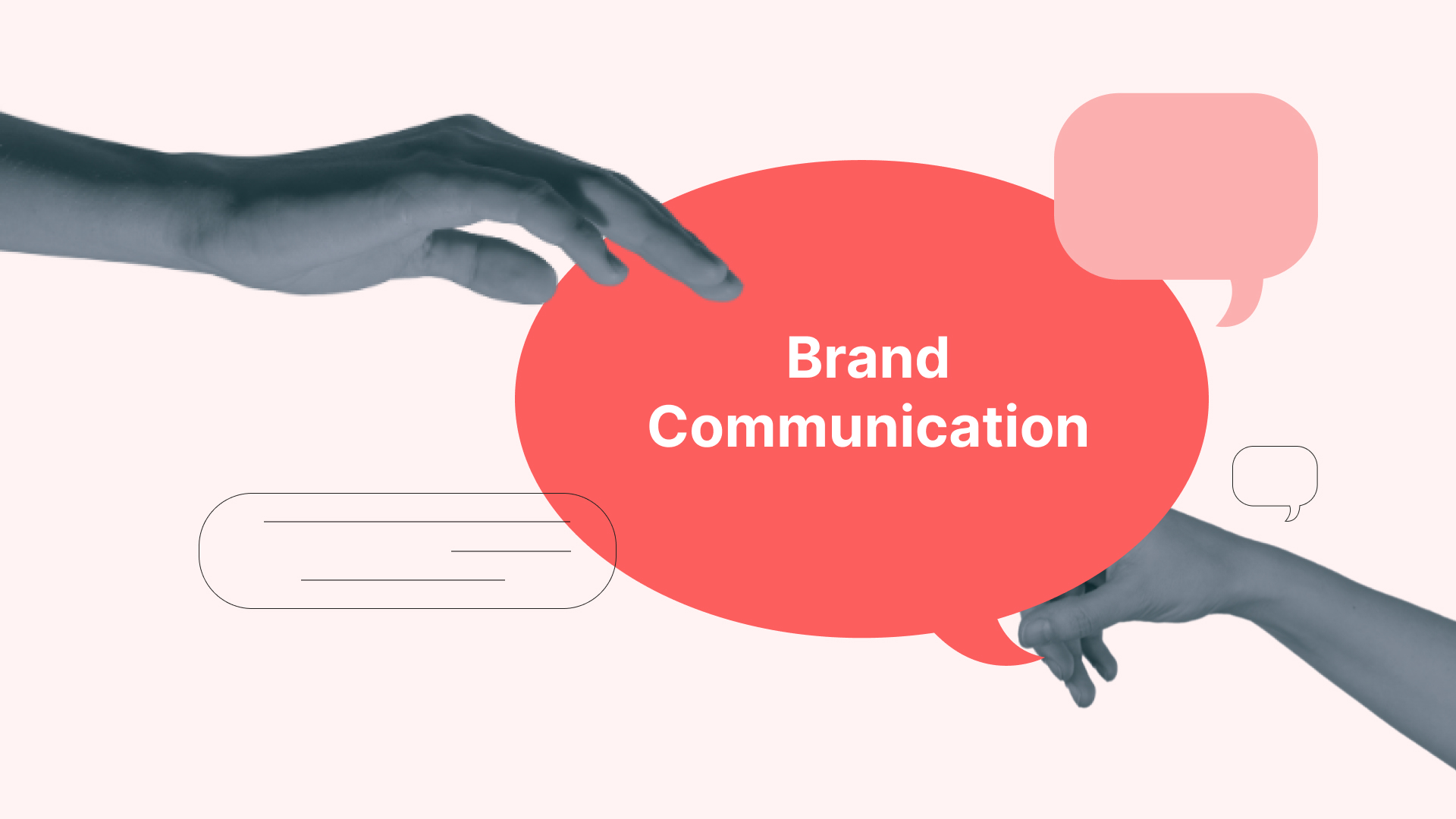6 Signs Your B2B Brand Needs a Reboot Due to Lack of Branding
Discover how a lack of branding can damage your credibility and customer trust. Take action today to create a clear and consistent brand message.

Discover how a lack of branding can damage your credibility and customer trust. Take action today to create a clear and consistent brand message.


You know that feeling when you’ve got an incredible product or service, but still can’t seem to grab your audience’s attention? Well, you’re not alone.
A recent study by Marketing-Interactive revealed that a staggering 94% of B2B marketers in Singapore struggle to capture their audience’s attention. And the problem isn’t your offering. It’s your branding. Or more specifically, the lack of it.
“Lack of branding” isn’t about not having a fancy logo or a tagline. It’s about the absence of a coherent, purpose-driven identity that resonates with your target audience. When a company's story becomes muddled or inconsistent, even the best products and services lose momentum.
This article will help you recognise the signs of ineffective branding, understand the impact of a lack of branding, and show you how to identify and address these issues before they affect your business’s bottom line.
A weak brand doesn’t just hinder your marketing efforts. It undermines your credibility, confuses your audience, and erodes trust.
In the B2B market like Singapore, where trust and reputation govern decision-making, unclear branding doesn’t just confuse; it quietly erodes credibility.
The impact isn’t always immediate, but it compounds over time, leading to missed opportunities, reduced client loyalty, and declining market share.
The following are some key areas where the impact of a lack of branding becomes most evident:
When a company’s message blends with its competitors’, buyers stop seeing a clear reason to choose it. Over time, pricing becomes the only point of comparison. This leads to thinner margins, longer sales cycles, and an overreliance on discounts to stay competitive.
Inconsistent design, unclear messaging, or vague promises send the wrong signals. If your audience doesn’t perceive you as reliable, even loyal clients may hesitate to renew their contracts or recommend you to others.
Branding isn’t only external. When employees can’t clearly explain what the brand stands for, communication fractures internally. Teams create their own versions of messaging, and customer-facing teams lose confidence. This confusion shows up in client meetings, proposals, and pitches; moments that define growth potential.
Without a coherent brand, every campaign starts from scratch. Marketing teams spend more time explaining, justifying, and convincing instead of reinforcing familiar brand values. The result is a higher cost per acquisition and weaker recall despite ongoing marketing investment.
A brand that fails to evolve or remain relevant loses its perceived market value. This affects not only customer loyalty but also recruitment, partnerships, and even investor confidence. In Singapore’s small but competitive ecosystem, a fading brand reputation spreads quickly.
Also Read: Unveiling the Secret: Why Branding Matters to Businesses
As we’ve discussed the consequences of weak branding, it’s important to recognise the early warning signs that can indicate when your brand is struggling to connect with its audience.
Brand erosion rarely happens suddenly.
It begins with small cracks, a message that doesn’t land, a design that feels off, or employees who are unsure how to describe what makes the company different.
Over time, these cracks widen into credibility gaps.
Below are the clearest indicators that a brand is struggling to connect or losing its distinctiveness.
Your sales pitch, website copy, and social posts tell slightly different stories. Prospects hear one version from marketing, another from sales, and a third from leadership. This inconsistency confuses customers and weakens trust, especially in B2B markets, where every message is scrutinised by multiple stakeholders.
Logos, colours, and typography that once looked sharp now feel dated. Collateral produced by different teams looks mismatched. A weak visual identity signals a lack of care or direction, which can quietly undermine perceptions of quality.
If buyers can’t recall your brand after a meeting or trade show, your message isn’t distinctive enough. In Singapore’s crowded sectors, from logistics to fintech, top-of-mind recall determines who gets shortlisted.
When potential clients ask, “What exactly do you offer?”, it’s a sign the brand story isn’t clear. Effective brands make their value obvious within seconds. Unclear positioning forces sales teams to spend extra time clarifying and delaying decisions.
If clients regularly push for lower prices or switch easily, it’s often not about cost; it’s about perceived sameness. When the brand doesn’t communicate unique value, price becomes the deciding factor.
Staff represent the brand every day. If they describe the company differently or fail to connect their work to the brand promise, customers notice. This reflects a lack of internal brand clarity, a problem that weakens credibility from the inside out.
Frequent logo refreshes, last-minute tagline changes, or inconsistent campaign styles usually point to a reactive approach. Without a guiding brand strategy, businesses chase trends rather than building enduring meaning.
Once these signs are identified, it’s crucial to understand how consumer perception can amplify branding challenges.
In B2B markets, many leaders assume perception matters less than product performance.
That assumption costs companies millions each year.
Perception shapes credibility, and credibility drives contract, especially in Singapore, where business decisions often hinge on trust, reliability, and long-term partnership potential.
Even when decisions involve committees and budgets, emotion still plays a role. Buyers want confidence that a brand will deliver on its promises. If a brand looks inconsistent, lacks polish, or communicates vaguely, it creates hesitation, a silent barrier to conversion.
In Singapore’s small but connected industries, that hesitation spreads quickly through word of mouth. One negative experience can ripple through entire supplier networks.
Today’s B2B buyers are also consumers of global tech brands that offer seamless, intuitive experiences. They expect the same standard from service providers and industrial firms. When a B2B company’s website feels clunky or its messaging unclear, buyers subconsciously associate it with inefficiency, even if the core product is excellent.
LinkedIn, industry forums, and client testimonials now influence perception as much as direct meetings. A weak brand presence on these platforms suggests stagnation. In Singapore’s close-knit professional circles, where many business leaders share connections, this can quickly shape overall market perception.
Customers notice when employees seem unsure or inconsistent. In pitches or project discussions, misaligned messaging signals weak internal communication. It raises doubts about execution reliability: “If they can’t align their story, can they align their delivery?”
Once a brand’s reputation weakens, recovery is costly. Marketing spend must increase just to regain visibility. Competitors with clearer, more confident identities gain traction faster. In contrast, a strong brand reduces the need for persuasion; it creates a sense of assurance before the first meeting even begins.
Perception isn’t decoration; it’s performance. When branding falters, even great companies appear uncertain or outdated.
With a clearer understanding of how perception influences your brand, it’s time to diagnose the root causes that may be contributing to these issues within your business.
Branding failures rarely stem from a single mistake.
They’re usually the result of small strategic oversights that build over time — lack of focus, inconsistent leadership, or misplaced priorities. Identifying these root causes is critical before attempting any rebrand or campaign fix.
Many B2B companies in Singapore focus heavily on short-term sales and operational efficiency but overlook long-term brand building. Branding becomes an afterthought rather than a business pillar. Without a clearly defined purpose, values, and positioning, every marketing effort feels disjointed.
Brand clarity starts at the top. When leaders disagree on what the company stands for, that confusion filters down to marketing, sales, and service teams. Over time, departments start telling different stories, one focused on innovation, another on cost savings, another on reliability, leaving customers uncertain about the company’s true identity.
Frequent rebranding, inconsistent campaign styles, and last-minute pivots often indicate a lack of strategic direction. Instead of building recognition through repetition and consistency, companies chase the next quick fix. The result? A patchwork brand that never fully resonates.
Many firms equate “branding” with design. They invest in new logos, taglines, or refreshed colour palettes, without addressing the underlying brand narrative. While visuals matter, they can’t compensate for weak positioning or unclear messaging. The most successful Singaporean B2B brands, especially in finance and logistics, pair strong visuals with a sharp, values-driven story.
If employees don’t understand the brand, they can’t communicate it. Internal brand engagement is often overlooked during rebrands. Teams aren’t trained to live the brand values in their interactions. This creates a gap between what the brand promises and what customers experience.
Without metrics, brand issues go unnoticed until sales decline. Few B2B companies in Singapore track brand health indicators such as awareness, recall, and trust. Regular measurement helps identify early warning signs, before the brand starts losing relevance.
Once you’ve diagnosed these root causes, it’s time to move forward. Here are steps you can take to repair and ensure your brand remains relevant and clear.
Repairing a weakened brand starts with clear thinking and consistent action.
It’s not about a new logo or campaign; it’s about restoring clarity and trust — both internally and externally.
Here’s a structured way to rebuild a strong, credible brand foundation.
Start by reviewing every point of contact with customers and employees, your website, sales decks, social channels, proposals, and customer service tone. Ask a simple question: Do they reflect the same message and value?
Gather customer feedback and measure awareness, recall, and sentiment. Use these insights to identify where your story breaks down. In Singapore’s B2B environment, even subtle differences in presentation can influence credibility.
Clarity begins with purpose: what the company stands for and how it adds value to clients. Refine your positioning statement so it’s specific, not aspirational. A good test: if your statement could apply equally to a competitor, it’s not distinctive enough.
Once you define purpose and positioning, ensure leadership, marketing, and operations use the same language. Consistency at the top ensures coherence everywhere else.
Employees must know how to express the brand in their roles. Conduct short workshops or discussions that connect daily tasks to the brand promise. Provide examples of how tone, visuals, and service reinforce identity.
When internal understanding improves, external perception follows naturally, because customers experience the same message at every touchpoint.
A complete rebrand isn’t always necessary. In many cases, refining the colour palette, typography, or imagery is enough to restore relevance. Keep the elements that carry recognition value and adjust those that feel outdated.
Consistency builds recognition. Create clear brand guidelines, not just for design, but also for tone, vocabulary, and messaging hierarchy. Share them widely so every department uses the same standards. Whether it’s a LinkedIn post, a sales pitch, or a client proposal, each piece of communication should sound and look like it comes from the same source.
Every interaction, from email replies to invoice design, communicates brand character. Evaluate each stage of the client journey and remove friction or confusion. This attention to detail signals reliability and professionalism, qualities that matter most in long-term B2B relationships.
Brand repair isn’t a one-time effort. Track metrics such as awareness, consideration, client retention, and referral rates regularly. These indicators reveal whether your brand improvements are translating into real results. Small quarterly reviews help you catch early signs of drift and correct course before larger issues reappear.
Also Read: 8 Game-Changing Branding Strategies for Singapore B2Bs To Go Global
While implementing these fixes, it’s also useful to examine real-life case studies to learn from the experiences of others.
The Proof is in the Work. Explore Our Portfolio and See for Yourself.
Brand effectiveness is tested not only by design quality.
But by how well it adapts to market realities, audience expectations, and organisational clarity.
Across Singapore, several rebranding journeys reveal how addressing or neglecting key brand signals can shape perception and outcomes.
Here are three examples that demonstrate the impact of getting it right, after recognising signs of brand weakness.
The Singapore Symphony Orchestra, established in 1979, faced declining attendance and concerns about sustaining future funding. The challenge wasn’t musical excellence; it was perception. The brand had become associated primarily with a niche audience rather than a shared national experience.
By rethinking its identity and communications, SSO repositioned itself as a cultural connector rather than an elite art group. It shifted from focusing solely on classical mastery to expressing its value in everyday Singaporean life, through community concerts, educational outreach, and accessible narratives about music as a shared heritage.
Lesson: When a brand’s meaning narrows over time, it risks losing connection with the broader audience it serves. Relevance requires translation, making the brand’s value clear to new generations without losing its legacy.
When the Asia Centre for Health Security launched in 2024, it entered a field dominated by Western perspectives. Without a clear brand distinction, it risked being perceived as another research body among many. The team recognised early that a lack of a defined brand purpose would limit credibility and funding potential.
The new brand design focused on clarity of purpose, positioning ACHS as the go-to organisation for analysis and policy insight rooted in Asia’s unique context. Its identity, symbolised by a shield with interlinked colours, expressed collaboration and unity, signalling that health security depends on cooperation across disciplines.
Lesson: In markets where trust is the main currency, brand perception must clearly communicate authority and authenticity. ACHS succeeded by anchoring its message in local relevance and collective expertise, rather than broad claims about global leadership.
ThoughtFull, a regional digital mental health platform, faced a branding challenge common to tech-driven wellness firms, being mistaken for just another app. While its product was effective, the brand lacked emotional depth and distinction.
The company revisited its brand story, realising that its real purpose was not just delivering tools but simplifying mental health care. The refined identity reflected this idea, with the two lowercase “l” characters in its name forming a visual metaphor for continuous care and connection. This change created stronger recognition and a more human connection with users across its markets.
Lesson: A strong brand is built on clarity of purpose, not just design polish. When audiences can quickly grasp how a brand makes their lives easier or more meaningful, loyalty follows.
Every organisation faces moments when its brand feels uncertain, when messages lose focus, visuals feel dated, or audiences no longer connect. These are not signs of failure, but reminders to reassess purpose and consistency.
Now is a good time to review how your brand is perceived by clients, partners, and your own teams. Small gaps, if addressed early, can prevent larger disconnects later.
Speak with our team to discuss how we can help you strengthen brand clarity for the long term.
1.What are the reasons for not branding?
Some businesses may feel that branding isn't essential, particularly if they believe their products or services speak for themselves. Others may face resource constraints or think branding efforts are too complex or costly. Without a defined brand, companies risk blending in with others and losing potential clients or opportunities.
2. Who needs branding the most?
Any business looking to stand out and create a lasting connection with customers needs branding. This is especially true for startups, companies entering new markets, or businesses in sectors where differentiation is key to building trust and credibility with clients.
3. What causes poor brand awareness?
Poor brand awareness typically results from inconsistent messaging, lack of visibility across the right channels, and weak or outdated visual identities. A failure to regularly engage with your audience or differentiate your brand from competitors can also contribute to low brand recognition.
4. How to make your branding more consistent?
Start by creating clear brand guidelines for messaging, tone, visuals, and customer interactions. Ensure all departments, sales, marketing, and customer service, are on the same page regarding your brand values and purpose. Consistency in design, language, and how you interact with customers can help reinforce your brand at every touchpoint.
5. Which comes first, marketing or branding?
Branding should come first. Before launching any marketing campaign, it's essential to have a clear understanding of your brand's identity, purpose, and values. Marketing efforts will be more effective when they're built upon a solid, consistent brand foundation.


.jpg)